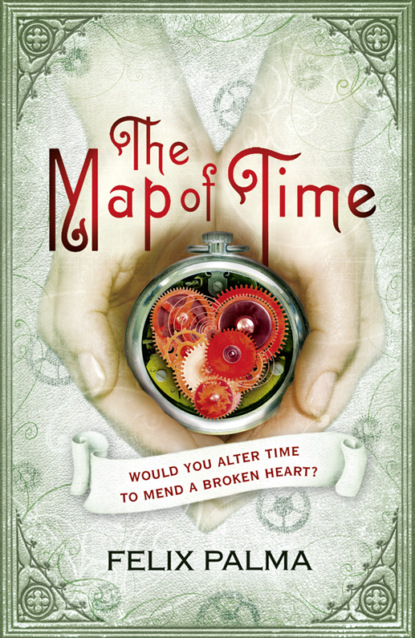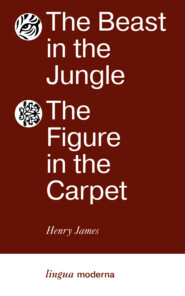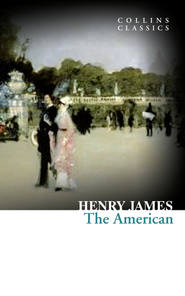По всем вопросам обращайтесь на: info@litportal.ru
(©) 2003-2024.
✖
The Map of Time and The Turn of the Screw
Настройки чтения
Размер шрифта
Высота строк
Поля
Murray studied the two men for a moment before he replaced the box on the desk, where it sat, lid open, like an oyster or an engagement ring. Then he added, ‘But in the meantime, while science is looking for a way to make these dreams come true, we have another method of travelling in time, although unfortunately this one does not enable us to choose our destination.’
‘What method is that?’ Andrew enquired.
‘Magic,’ boomed Murray.
‘Magic?’ echoed Andrew, taken aback.
‘Yes, magic,’ repeated his host, waving his fingers in the air mysteriously and making a sound like wind whistling down a chimney, ‘but not the conjuring tricks you see in music halls or theatres, or the sort those frauds from the Golden Dawn claim to perform. I’m talking about genuine magic. Do you believe in magic, gentlemen?’
Andrew and Charles paused, a little confused by the direction the conversation was taking, but Murray needed no reply. ‘Of course not,’ he grumbled. ‘That’s why I avoid mentioning it. I prefer my clients to believe we are travelling through time by means of science. Everybody believes in science. It has become far more credible than magic. We live in modern times. But, I assure you, magic does exist.’
Then, to Andrew and Charles’s surprise, he rose deftly from his seat and gave a shrill whistle. The dog, which had been lying on the carpet all this time, stood up at once and trotted gaily over to its master. ‘Gentlemen, I’d like you to meet Eternal,’ he said, as the creature circled him excitedly. ‘Do you like dogs? It’s quite safe to stroke him.’
As though this were some sort of requirement they must fulfil for Gilliam Murray to continue his discourse, Charles and Andrew stood up and ran their hands over the soft, well-brushed coat of the golden retriever.
‘Gentlemen,’ Murray declared, ‘be aware that you are stroking a miracle. For, as I told you, there is such a thing as magic. It is even tangible. How old do you think Eternal is?’
Charles had no difficulty in answering the question: he had several dogs on his country estate and had grown up with them. He examined the animal’s teeth with a knowledgeable air, and replied confidently, ‘A year, two at the most.’
‘Spot on,’ confirmed Gilliam, kneeling and scratching the dog’s neck affectionately. ‘You look a year old, don’t you? That’s your age in real time?’
Andrew took this opportunity to catch his cousin’s eye, anxious to know what he thought of all this. Charles’s tranquil smile put his mind at rest.
‘As I said,’ Murray went on, rising to his feet, ‘I didn’t decide to set up my company on account of Wells’s novel. It was a complete coincidence, although I won’t deny I have greatly benefited from the hidden longing he stirred in people. Do you know why time travel is so attractive? Because we all dream of it. It is one of man’s oldest desires. But would you have considered it possible, gentlemen, before Wells wrote his book? I don’t think so. And I assure you neither would I. What Mr Wells has done is to make an abstract craving real, to articulate this latent desire ever-present in man.’
Murray paused, giving his summary the opportunity to descend on his visitors, like dust settling on furniture after a carpet has been beaten.
‘Before setting up this company, I worked with my father,’ he resumed. ‘We financed expeditions. We were one of the hundreds of societies sending explorers to the furthest corners of the world with the aim of gathering ethnographic and archaeological data to publish in scientific journals, or finding exotic insects or flowers for the showcases of some science museum eager to display God’s wildest creations. But, regardless of the business side of things, we were driven by a desire to get to know as accurately as possible the world we lived in. We were, to coin a phrase, spatially curious. However, we never know what fate has in store for us, do we, gentlemen?’
Again without waiting for a reply, Gilliam Murray gestured for them to follow him. Eternal at his heels, he led them through the obstacle course of tables and globes towards one of the side walls. Unlike the others, which were lined with shelves crammed with atlases, geographical treatises, books on astronomy and numerous other works on obscure subjects, this wall was covered with maps, arranged according to when the regions on them had been charted.
The collection covered a journey that started with a few reproductions of Renaissance maps inspired by Ptolemy’s works, which made the world look alarmingly small, like an insect with its legs chopped off, reduced to little more than a shapeless Europe. Next came the German Martin Waldseemüller’s map, where America had broken away from Asia, and finally the works of Abraham Ortelius and Gerhardus Mercator, which showed a much larger world, similar in size to that of the present day. Following this chronological order from left to right, as guided by Murray, the cousins felt as though they were watching the petals of a flower open or a cat stretch itself. The world seemed to unfurl before their eyes, to grow, as navigators and explorers extended its frontiers.
Andrew found it fascinating that only a few centuries earlier people had had no idea that the world went on across the Atlantic, or that its true size depended on the courage and fortunes of explorers, whose dare-devil journeys had filled the medieval void, the dwelling place of sea monsters. On the other hand, he regretted that the world’s dimensions were no longer a mystery, that the most recent maps of land and sea constituted an official world in which all that was left to chart were coastlines.
Murray made them pause in front of the last gigantic map in his collection. ‘Gentlemen, you have in front of you possibly the most accurate world map in all of England,’ he announced, openly gloating. ‘I keep it continually updated. Whenever another region of the planet is charted, I have a new version drawn up and I burn the obsolete one. I consider this a symbolic gesture, like erasing my old, imprecise idea. Many of the expeditions you see here were made possible by our funding.’
The map was a blurred mass of multicoloured lines that, Murray explained, represented all the expeditionary voyages hitherto undertaken by man, the vicissitudes of which he had written up, doubtless with morbid enjoyment, in the chart’s left-hand margin. However, one glance at the map was enough to see that the precision with which each sinuous voyage had been traced eventually became pointless: it was impossible to follow any single journey owing to the criss-cross of the lines that recorded every expedition. These ranged from the earliest, such as that of Marco Polo (represented by a gold line snaking around India, China, Central Asia and the Malayan archipelago), to the most recent, like that undertaken by Sir Francis Younghusband, who had travelled from Peking to Kashmir, crossing the Karakoram mountains with their soaring glacier-topped peaks.
The squiggles were not confined to land: others left terra firma, imitating the foamy wake of legendary ships such as Columbus’s caravels as they crossed the Atlantic Ocean, or the Erebus and the Terror as they tried to find a short-cut to China via the Arctic Ocean. These last two lines vanished suddenly, as had the actual ships when sailing across the Lancaster Strait, the so-called North-west Passage. Andrew decided to follow the blue line that cut across the island of Borneo, that sultry paradise overrun by crocodiles and gibbons to the south-east of Asia. It followed the tortuous journey of Sir James Brooke, nicknamed the Rajah of Sarawak, a name with which Andrew was familiar because the explorer popped up in Salgari’s novels as a ruthless pirate slayer.
Then Murray asked them to concentrate on the most intricate part of the map, the African continent. There, all of the expeditions that had attempted to discover the mythical source of the Nile -those of the Dutchwoman Alexandrine Tinné, Mr and Mrs Baker, Burton and Speke and, most famously, Livingstone and Stanley, as well as many more – converged to form a tangled mesh, which, if nothing else, illustrated the fascination Africa had held for the intrepid wearers of pith helmets.
‘The account of how we discovered time travel began exactly twenty-two years ago,’ Murray announced theatrically.
As he had heard the story many times before, Eternal stretched out at his master’s feet. Charles smiled gleefully at this promising beginning, while Andrew’s lips twisted in frustration. He realised he would need a lot of patience before he found out whether or not he would be able to save Marie Kelly.
Chapter VIII
Permit me, if you will, to perform a little narrative juggling at this point, and recount the story Gilliam Murray told them in the third person instead of the first, as if it were an excerpt from an adventure story, which is the way Murray would ultimately have liked to see it.
Back then, at the beginning of the nineteenth century, the main ambition of most expeditionary societies was to discover the source of the Nile, which Ptolemy had situated in the Mountains of the Moon, the magnificent range rising out of the heart of Africa. However, modern explorers seemed to have had no more luck than Herodotus, Nero or anyone else who had searched in vain for it throughout history. Richard Burton and John Speke’s expedition had only succeeded in making enemies of the two explorers, and David Livingstone’s had thrown little light on the matter.
When Henry Stanley found Livingstone in Ujiji, he was suffering from dysentery. Nevertheless, he refused to return with Stanley to the metropolis and set off on another expedition, this time to Lake Tanganyika. He had to be brought back from there on a litter, racked with fever and utterly exhausted. The Scottish explorer died at Chitambo, and his final journey was made as a corpse, embalmed and enclosed in a large piece of bark from a myonga tree. It took porters nine months to carry him to the island of Zanzibar, whence he was finally repatriated to Great Britain. He was buried in 1878 in Westminster Abbey with full honours, the source of the Nile remaining a mystery.
Everyone, from the Royal Geographic Society to the most insignificant science museum, wanted to take credit for discovering its elusive location. The Murray family were no exception, and at the same time as the New York Herald and the London Daily Telegraph sponsored Stanley’s new expedition, they, too, sent one of their most experienced explorers to the inhospitable African continent.
His name was Oliver Tremanquai, and he had undertaken several expeditions to the Himalayas. He was also a veteran hunter. Among the creatures he killed with his expert marksmanship were Indian tigers, Balkan bears and Ceylonese elephants. Although never a missionary, he was a deeply religious man, and never missed an opportunity to evangelise any natives he might come across, listing the merits of his God like someone selling a gun.
Excited about his new mission, Tremanquai left for Zanzibar, where he acquired porters and supplies. However, a few days after he had made his way into the continent the Murrays lost all contact with him. The weeks crept by and still they received no message. They began to wonder what had become of the explorer. With great sorrow, they gave him up for lost as they had no Stanley to send after him.
Ten months later, Tremanquai burst into their offices, days after a memorial service had taken place with the permission of his wife – loath to don her wido’s weeds. As was only to be expected, his appearance caused the same stir as if he had been a ghost. He was terribly gaunt, his eyes were feverish, and his filthy, malodorous body hardly looked as if he had spent the intervening months washing in rosewater. As was obvious from his deplorable condition, the expedition had been a complete disaster from the outset. No sooner had they penetrated the jungle than they were ambushed by Somali tribesmen. Tremanquai was unable even to take aim at those feline shadows emerging from the undergrowth before he was felled by a cascade of arrows. There, in the stillness of the jungle, far from the eyes of civilisation, the expedition was brutally massacred. The attackers had left him for dead, like his men.
But life had toughened Tremanquai and he had survived. He roamed the jungle for weeks, wounded and feverish, arrows still stuck in his flesh, using his rifle as a crutch, until his pitiful wanderings brought him to a small native village encircled by a palisade. Exhausted, he collapsed before the narrow entrance to the fence, like a piece of flotsam washed up by the sea.
He awoke several days later completely naked, stretched out on an uncomfortable straw mattress with repulsive poultices on his wounds. He was unable to identify the features of the young girl applying the sticky greenish dressings as belonging to any of the tribes he knew. Her body was long and supple, her hips extremely narrow and her chest almost as flat as a board. Her dark skin gave off a faint, dusky glow. He soon discovered that the men possessed the same slender build, their delicate bone structure almost visible beneath their slight musculature. Not knowing what tribe they belonged to, Tremanquai decided to invent a name for them. He called them the Reed People, because they were as slim and supple as reeds.
Tremanquai was an excellent shot, but he had little imagination. The Reed People’s otherworldly physique, as well as the big black eyes in their exquisite doll-like faces, was a source of astonishment, but as his convalescence progressed, he discovered further reasons to be amazed: the impossible language they used to communicate with each other, a series of guttural noises he found impossible to reproduce, even though he was accustomed to imitating the most outlandish dialects; the fact that they all looked the same age; and the absence in the village of the most essential everyday implements. It was as though the life of these savages took place elsewhere, or as if they had succeeded in reducing it to a single act: breathing.
But one question above all preyed insistently on Tremanquai’s mind: how did the Reed People resist the neighbouring tribes’ repeated attacks? They were few in number, they looked neither strong nor fierce, and apparently his rifle was the only weapon in the village.
He soon discovered the answer. One night, a lookout warned that ferocious Masai tribesmen had surrounded the village. From his hut, with his carer, Tremanquai watched his saviours form a group in the centre of the village facing the narrow entrance, which curiously had no door. Standing in a fragile line as though offering themselves up for sacrifice, the Reed People linked hands and began to chant an intricate tune. Recovering from his astonishment, Tremanquai reached for his rifle and dragged himself back to the window with the intention of defending his hosts as best he could. Scarcely any torches were lit in the village, but the moon cast sufficient light for an experienced hunter like himself to take aim. He set his sights on the gap in the stockade, hoping that if he managed to pick off a few Masai the others might think the village was defended by white men and flee.
To his surprise, the girl gently lowered his weapon, indicating to him that his intervention was unnecessary. Tremanquai bridled, but the Reed girl’s serene gaze made him think again. From his window, he watched with trepidation and bewilderment as the savage horde of Masai spilled through the entrance and his hosts carried on their discordant incantation while the spears came ever closer. The explorer steeled himself to witness the passive slaughter.
Then something happened, which Tremanquai had described in a quavering, incredulous voice, as though he found it hard to believe the words he himself was uttering. The air had split open. He could think of no better way to describe it. It was like tearing off a strip of wallpaper, he said, leaving the wall bare. Except in this case it was not a wall but another world. A world the explorer was at first unable to see into from where he was standing, but which gave off a pale glow, lighting the surrounding darkness. Astonished, he watched the first of the Masai tumble into the hole that had opened between them and their intended victims and vanish from reality from the world Tremanquai was in, as though they had dissolved into thin air. On seeing their brothers swallowed up by the night, the rest of the Masai fled in panic. The explorer shook his head slowly, stunned by what he had seen.
He had lurched out of his hut and approached the hole that his hosts had opened in the very fabric of reality with their chanting. As he stood facing the opening, which napped like a curtain, he realised it was bigger than he had first thought. It rose from the ground, reaching above his head, and was easily wide enough for a carriage to pass through. The edges billowed over the landscape, concealing then exposing it, like waves breaking on the shore. Fascinated, Tremanquai peered through it as if it were a window. On the other side, there was a very different world from ours, a sort of plain of pinkish rock, swept by a harsh wind that blew sand up from the surface: in the distance, blurred by the swirling dust, he was able to make out a range of sinister mountains. Disoriented and unable to see, the Masai floundered in the other world, gibbering and running each other through with their spears. Those left standing fell one by one. Tremanquai watched the macabre dance of death, transfixed: the Masais’ bodies were caressed by a wind not of his world, like the strange dust clogging their nostrils.
The Reed People, still lined up in the middle of the village, resumed their ghostly chanting, and the hole began to close, slowly narrowing before Tremanquai’s eyes until it had disappeared. The explorer moved his hand stupidly across the space where the air had split open. Suddenly it seemed as if there had never been anything between him and the choir of Reed People, which now broke up, its members wandering to different corners of the village, as though nothing out of the ordinary had occurred.
For Tremanquai, the world as he had known it would never be the same. He realised he now had only two choices. One was to see the world, which he had hitherto believed to be the only world, as one of many, superimposed like the pages of a book, so that all you had to do was thrust a dagger into it to open a pathway through all of them. The other was simpler: he could lose his mind.
That night, understandably, the explorer was unable to sleep. He lay on his straw mattress, eyes wide open, body tense, alert to the slightest noise coming from the darkness. The knowledge that he was surrounded by witches, against whom his rifle and his God were useless, filled him with dread. As soon as he was able to walk more than one step without feeling dizzy, he fled the Reed People’s village. It took him several weeks to reach the port of Zanzibar, where he survived as best he could until he was able to stow away on a ship bound for London. He was back ten months after he had set out, but his experiences had changed him utterly.
It had been a disastrous voyage and, naturally enough, Sebastian Murray, Gilliam’s father, did not believe a word of his story. He had no idea what had happened to his most experienced explorer during the months he had gone missing, but he was clearly unwilling to accept Tremanquai’s tales of Reed People and their ridiculous holes in the air, which he considered the ravings of a lunatic. And his suspicions were borne out as Tremanquai proved incapable of living a normal life with his ‘widow’ and their two daughters. His wife would doubtless have preferred to carry on taking flowers to his grave than to live with the haunted misfit Africa had returned to her.
Tremanquai veered between apathy and random fits of madness, which swiftly turned the hitherto harmonious family home upside down. His accesses of insanity, which occasionally drove him to run naked through the streets or shoot at the hats of passers-by from his window, were a constant menace to the otherwise peaceful neighbourhood, and he was eventually carted off to the asylum at Guy’s Hospital, where he was locked away.
Yet he was not entirely abandoned. Unbeknown to his father, Gilliam Murray went to see him in hospital as often as he could, moved by the grief he felt that one of his family’s best men should be reduced to such a wretched state, but also thrilled to hear him narrate that incredible story. The young man of barely twenty, as Murray then was, visited the explorer with the eagerness of a child at a puppet show, and Tremanquai never disappointed him. Sitting on the edge of his camp-bed, his gaze straying towards the damp patches on the walls, he needed no encouragement to retell the tale of the Reed People, embellishing it with new and extraordinary details each time, grateful for the audience and for being given time to inflate his fantasy.
For a while, Murray believed he would regain his sanity, but after four years of incarceration, Tremanquai hanged himself in his cell. He left a note on a grubby piece of paper. In a spidery scrawl that could just as well have been his normal writing as distorted by his inner torment, he stated ironically that he was departing this world for another, which was only one of the many that existed.
By that time Murray had begun working in his father’s company. Although Tremanquai’s story still seemed to him sheer madness, but perhaps for that very reason, without his father’s knowledge he sent two explorers to Africa to search for the apparently non-existent Reed People. Samuel Kaufmann and Forrest Austin were a couple of numbskulls, partial to showing off and drunken sprees, whose every expedition ended in disaster. But they were the only men his father would not miss, and the only two who would nonchalantly set off to the Dark Continent in search of a tribe of singing witches with the power to open doorways to other worlds. They were also the only men to whom, because of their glaring ineptitude, he dared assign a mission so hopeless, which was really only a modest tribute to the memory of the hapless Oliver Tremanquai.
Kaufmann and Austin left England almost in secret. Neither they nor Gilliam Murray could have known that they would become the most famous explorers of their day. Following instructions, as soon as they set foot in Africa they sent telegrams giving news of their progress. Murray read these cursorily before placing them in his desk drawer with a sad smile.
Everything changed when, three months later, he received one telling him they had at last found the Reed People. He could not believe it! Were they playing a joke on him in revenge for his having sent them on a wild-goose chase? he wondered. But the details contained in the telegrams ruled out any possibility of deceit because, as far as he remembered, they tallied entirely with those embellishing Oliver Tremanquai’s story. Astonished though he was, he could only conclude that both they and Tremanquai were telling the truth: the Reed People did exist.

















